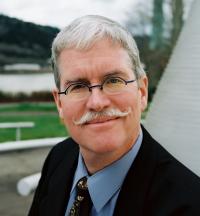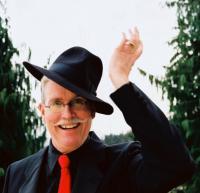 When Jeff Rodman entered CSUN in 1970, he was torn between two majors. His mother was a secretary and church organist, his father an engineer at Hughes Aircraft, and while he had developed passions for music, engineering and photography, he had to choose a direction.
When Jeff Rodman entered CSUN in 1970, he was torn between two majors. His mother was a secretary and church organist, his father an engineer at Hughes Aircraft, and while he had developed passions for music, engineering and photography, he had to choose a direction.
In the end, electrical engineering won out, and Rodman graduated with a B.S. from CSUN in 1974, adding a master’s degree two years later. But in the 40 years since, the cofounder, fellow and “chief technical evangelist” for San Jose-based Polycom, Inc., a major provider of telepresence and collaboration solutions, has built a successful career that has drawn on his early interest in all three fields.
“One of the fascinating things about our work at Polycom is that in distributed video and audio collaboration, you are intimately linking the visual and aural environments that people communicate in,” he says. “Working hands-on in those raw environments, like the darkroom and the piano, turned out to be an unexpectedly good preparation for applying them to all the facets of telepresence.”
Rodman feels strongly that the education he received at CSUN’s College of Engineering and Computer Science played a key role in his success, particularly the smaller class sizes, personal attention from faculty and hands-on lab time he enjoyed. So did the work experience he gained while a student, including two summer jobs at Hughes Aircraft. After earning his bachelor’s degree, he accepted a position as a staff engineer with Hughes, where he worked on digital image processing, test and specialized video systems for the defense industry, among other projects. At the same time, he spent two years as vice president of engineering for SVS, another company he cofounded to develop and market advanced music-to-vision display systems for the entertainment industry.
In 1980, Rodman moved to the Bay area to direct new product development for Harris Video Systems, where he managed the development of digital image and video processing systems for professional video customers, mostly in broadcasting and production. Four years later, he was recruited to lead hardware engineering at PictureTel, a startup in Massachusetts, which produced the first practical videoconferencing system and which introduced the motion analysis and coding algorithms and principles that form the underpinning of video communications even today. Through his efforts, he helped propel the company to a leadership position in the industry.
By the late 1980s, videoconferencing had become very popular. But, he says, “we realized that there was so much excitement about videoconferencing that its users had lost understanding of how important it was to still have clear voice and to easily exchange documents.” In response, Rodman returned to California and with a colleague, cofounded Polycom in 1990.
 “We asked ourselves what would happen if we put together a company that addressed all the ways people communicate, not just video,” he says. “We always knew we wanted to cover all the major bases, and this was to be the place to do it right.”
“We asked ourselves what would happen if we put together a company that addressed all the ways people communicate, not just video,” he says. “We always knew we wanted to cover all the major bases, and this was to be the place to do it right.”
Because audio is usually the most important way that people communicate, the first product Polycom developed was a small speakerphone that attached to a regular telephone handset.
“We did an excellent job of developing the product but then ran a quick total and discovered that although it worked great, we would have to sell the units for $400 each,” Rodman says. “This was 1991, and we knew that at $400 per user, we wouldn’t sell a lot. But then some further experimentation revealed that carefully extending the same technology to cover a whole conference room worked swimmingly well, and that was a hit.”
The result was the SoundStation, the iconic, futuristic speakerphone that today is a permanent fixture on conference tables around the world. Polycom continued to extend its audio product offerings, adding graphics conferencing in 1995 and introducing its first videoconferencing solution in 2000. From there, the company has advanced them all and also folded them together into a successful range of fully integrated collaboration solutions.
Over the past 25 years, Rodman says, he has transitioned from “one of the kids who started the thing to the old guy people come to with questions.” Currently serving as CTO, he heads development teams in Texas, Massachusetts, Beijing, Bangalore and Israel, despite the challenges that running an organization across 20 time zones presents to his circadian rhythms. In his spare time, he still indulges his passion for composing and performing music.
“When I was a freshman, I was really split, trying to decide whether to major in music or in engineering. Then I asked myself whether it would be easier to be an engineer and use that to pay for my time as a musician, or vice versa,” he recalls. “Putting it that way made it really easy. I figured I could have them both if I chose engineer as my ‘day job.’ That may not the right choice for everyone, but it sure has been for me.”

Subscribe to this post's comments feed